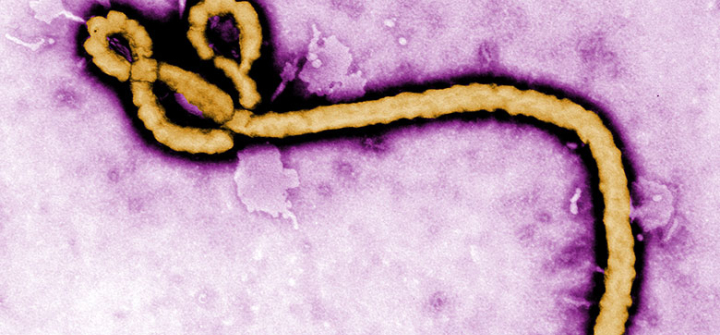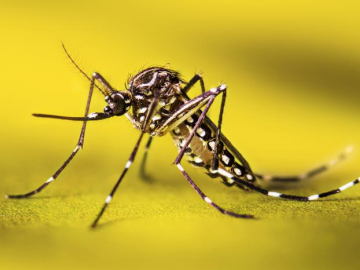Ebola: Persistent, and No Visa Required
Ian Crozier, an infectious disease doctor and Ebola survivor, was one of the first to realize the Ebola virus was haunting him. Two months after being declared Ebola-free, Crozier walked up to his bathroom mirror to brush his teeth and did a double take. One of his blue eyes had turned green.
Several weeks earlier, the live virus had been discovered in the anterior chamber of his left eye, where it had been squatting for months. Crozier calls the discovery of viral persistence the second watershed moment of his Ebola patient experience; the first, when he learned his diagnosis, and the second, when he had finally conquered the virus, only to learn it was back for more.
In other cases, viral persistence seems to be asymptomatic. The science community is buzzing over new findings from a long-term study on the persistence of the Ebola virus in bodily fluids. The preliminary results, which were published in the New England Journal of Medicine on Wednesday, suggest that the virus can persist in the semen of adult male survivors for up to 9 months.
Like the inner eye, the testis is considered an immunologically privileged site: normal immune responses that may mistake sperm for antigens and attack them are suppressed. But the suppression of the immune system in the testis can sometimes create a sanctuary for viruses to replicate without interruption. Earlier this year, the case of a male Ebola survivor who transmitted the virus to a female partner roughly 6 months after presenting symptoms sparked further investigation of the phenomenon.
The study’s results were published just days after Scottish nurse and Ebola survivor Pauline Cafferkey was readmitted to the hospital, critically ill, for post-Ebola complications. 9 months after being declared Ebola-free, the virus has been detected in her spinal fluid.
In all 3 scenarios, the resolute Ebola virus found a secret cranny to call home. As the first large cohort of Ebola survivors in history, West African outbreak survivors are expected to help researchers better understand the virus and its habits in humans. Additional hiding places are on the list of unknowns.
“Post-Ebola conditions are much like (acute) Ebola itself in that we don’t know as much about them as we would like,” says Armand Sprecher, an Ebola specialist with Médecins Sans Frontières. “We don’t know what exactly is causing the pathologies that are seen. Until now, the territory is rather unchartered.”
An Ebola plenary at this week’s World Health Summit in Berlin emphasized the call to better understand the biological mechanisms of the largest Ebola outbreak in history–and to educate the public on risky behaviors that could keep it going.
Though hundreds of West African survivors are presenting with eye inflammation, public health professionals highly discourage invasive procedures like eye taps or simple cataract removals, since eye instrumentation under imperfect circumstances could unleash a persistent virus back out into the population. The fear is heightened surrounding persistence in semen. Since at least some of the outbreak’s 8000 male Ebola survivors are still carrying the virus, a sexual encounter involving any of them could reintroduce an outbreak with indefinite borders.
“The Ebola outbreak shattered the notion that a disease of poor African nations will have no consequences elsewhere,” said Margaret Chan, Director-General of the World Health Organization, during her keynote address at the summit. She later added, “These infectious diseases don’t need visas.”




